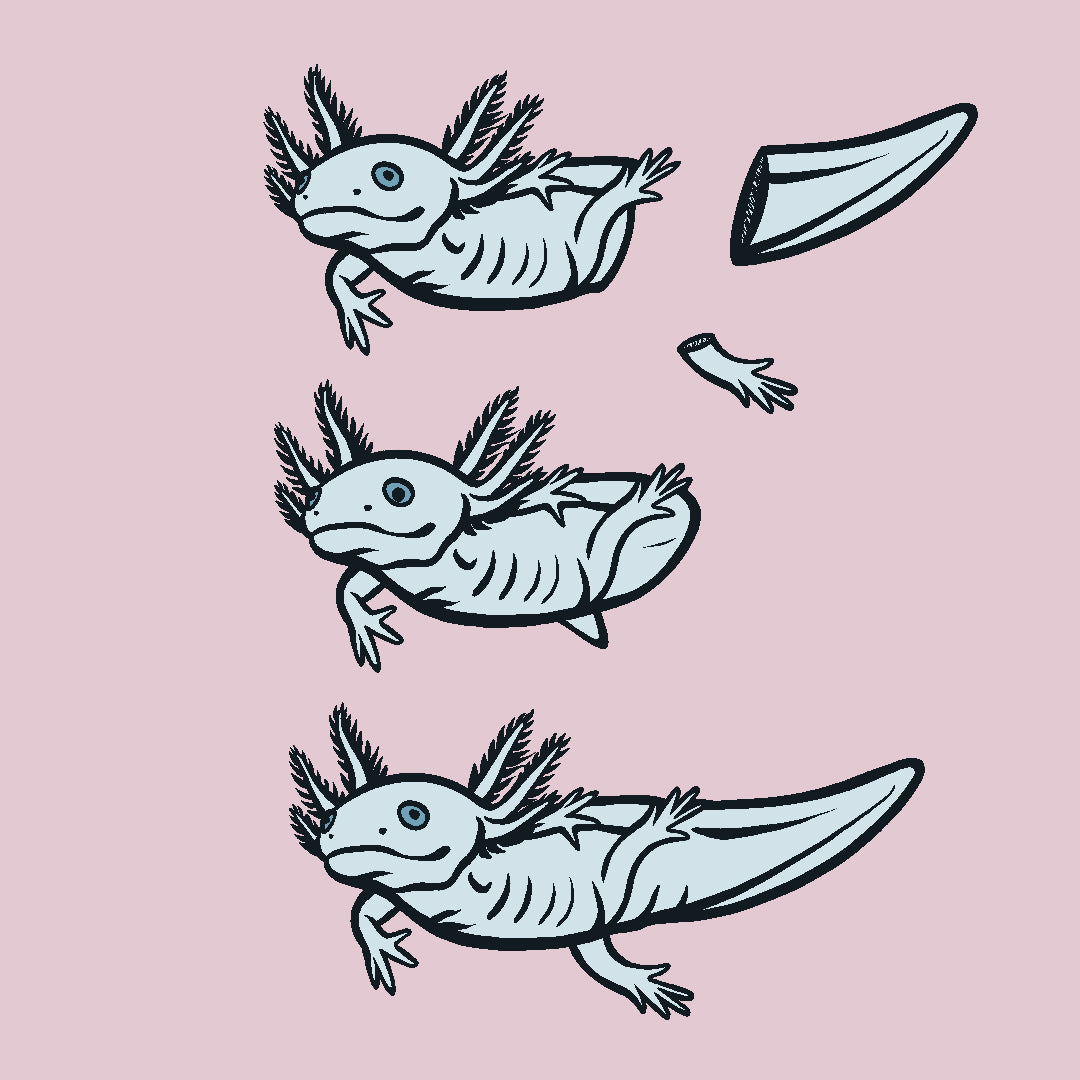
The Axolotl: Nature's Master of Regeneration
Share
(Feburary 1st - National Day of the Mexican Axolotl)
I was born in Mexico City. It is a remarkable place. While I left as a small child and moved to the USA, I have been fortunate enough to visit the city on many occasions. Years ago, I climbed aboard a colorful gondola-like party boat on Lake Xochimilco. Little did I realize there was a remarkable animal living in its canals, the mythic and incredible axolotl! Mexico has even commemorated it on its 50 peso bank note.

Here at Posh Tide, we're diving deep into the fascinating world of the axolotl for our new collection. This incredible creature isn't just adorable, it's a scientific marvel and a symbol of resilience with a rich cultural history. Let's explore what makes the axolotl so extraordinary:
Regeneration Superpowers
The axolotl is renowned for its unmatched regenerative abilities. Unlike humans, who typically form scar tissue at injury sites, axolotls can regenerate entire limbs, tails, parts of their heart, spinal cord, and even portions of their brain! Imagine losing an arm and having it perfectly regrow within months—that's the reality for these amazing amphibians. Scientists are diligently studying the axolotl's genome and cellular processes to unlock the secrets behind this superpower, hoping to one day translate this knowledge into regenerative therapies for humans.
Forever Young
Axolotls are neotenic, meaning they retain their larval characteristics throughout their lives, unlike other salamander species that undergo metamorphosis. They keep their feathery external gills and never develop lungs for terrestrial life, choosing to remain in their aquatic homes. This unique characteristic makes them easier to breed in captivity compared to other salamanders, further contributing to their scientific value.

A Genetic Enigma
The axolotl's genome is a treasure trove of information for scientists. It's a whopping ten times larger than the human genome, largely due to the presence of vast repetitive sequences. Researchers are meticulously mapping this complex genome to pinpoint the specific genes responsible for the axolotl's extraordinary regeneration capabilities. Understanding these genes could pave the way for developing therapies to enhance tissue repair in humans.
A Cultural Icon
Beyond its scientific significance, the axolotl holds a special place in Mexican culture. Its name comes from the Aztec deity Xolotl, the god of fire, lightning, and transformation. Myths depict Xolotl transforming into an axolotl to escape sacrifice, solidifying the creature as a symbol of resilience and the defiance of death. The axolotl's cultural importance is reflected in its presence in art and literature.
A Model for the Future
The axolotl's unique combination of regenerative powers, neoteny, and genetic complexity makes it an invaluable model organism for scientific research. By studying this remarkable creature, scientists are gaining insights into tissue regeneration, developmental biology, and genetics, potentially leading to groundbreaking medical advancements for humans. This Ologies podcast about the study of Axolotls (ambystomology) is very interesting.
We at Posh Tide are excited to share the wonders of the axolotl through our upcoming collection. Stay tuned for a celebration of this incredible amphibian—a symbol of nature's ingenuity and a beacon of hope for the future of regenerative medicine.
—
On a sad note, the International Union for Conservation of Nature and Natural Resources (IUCN) has listed it as critically endangered.
